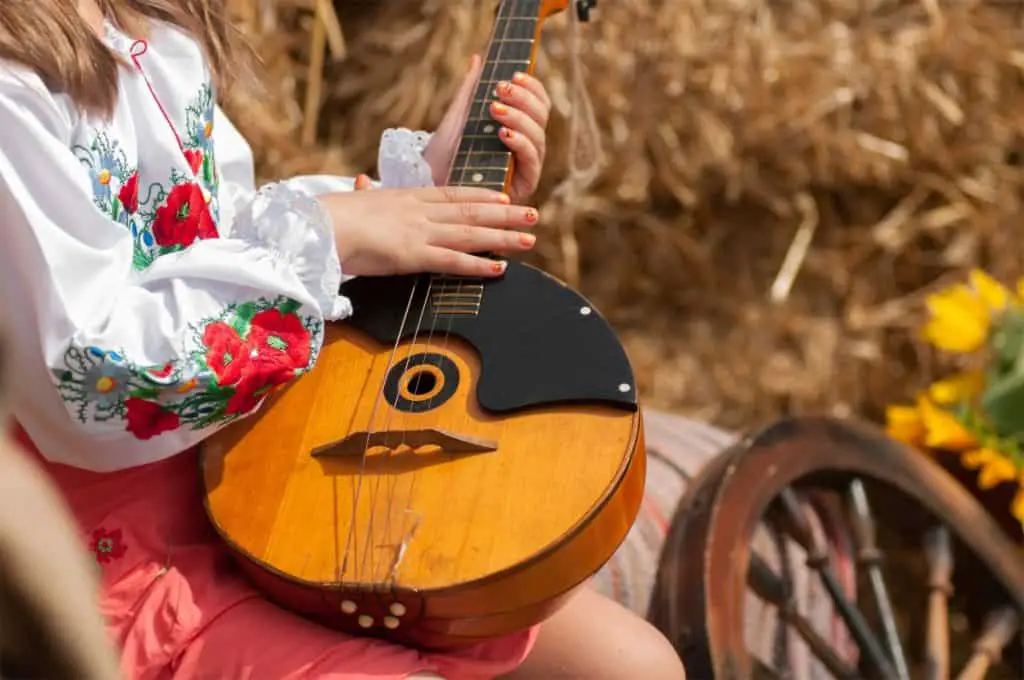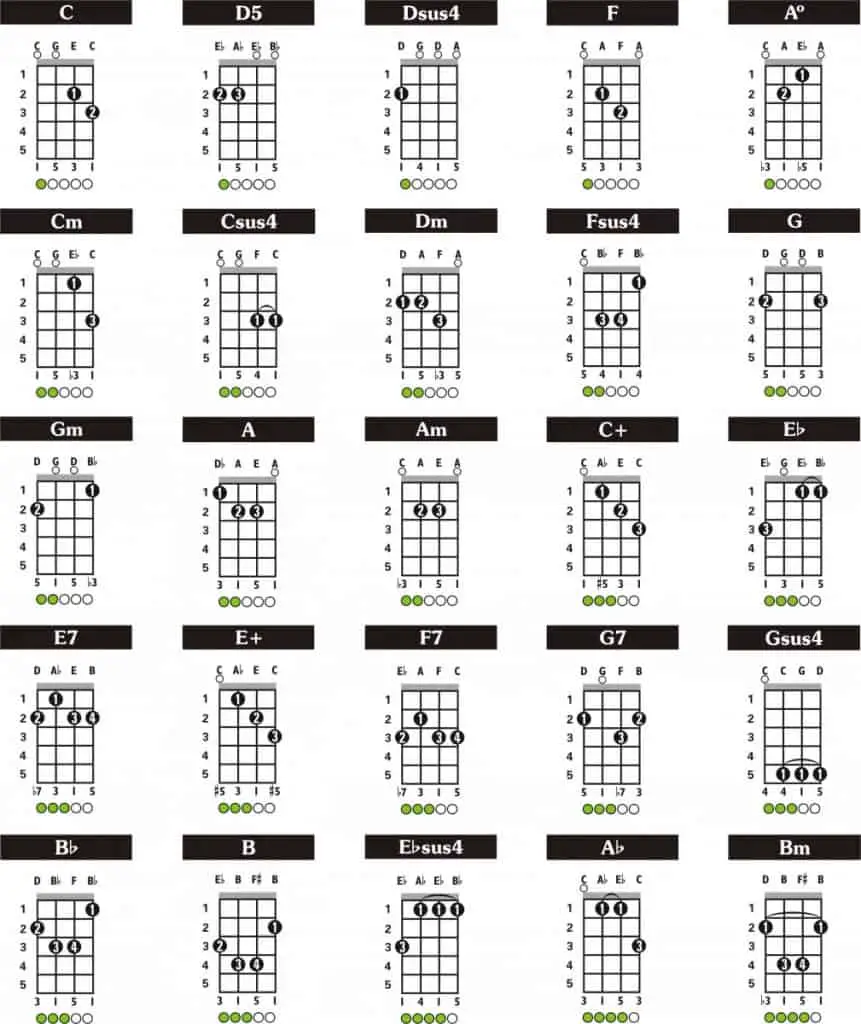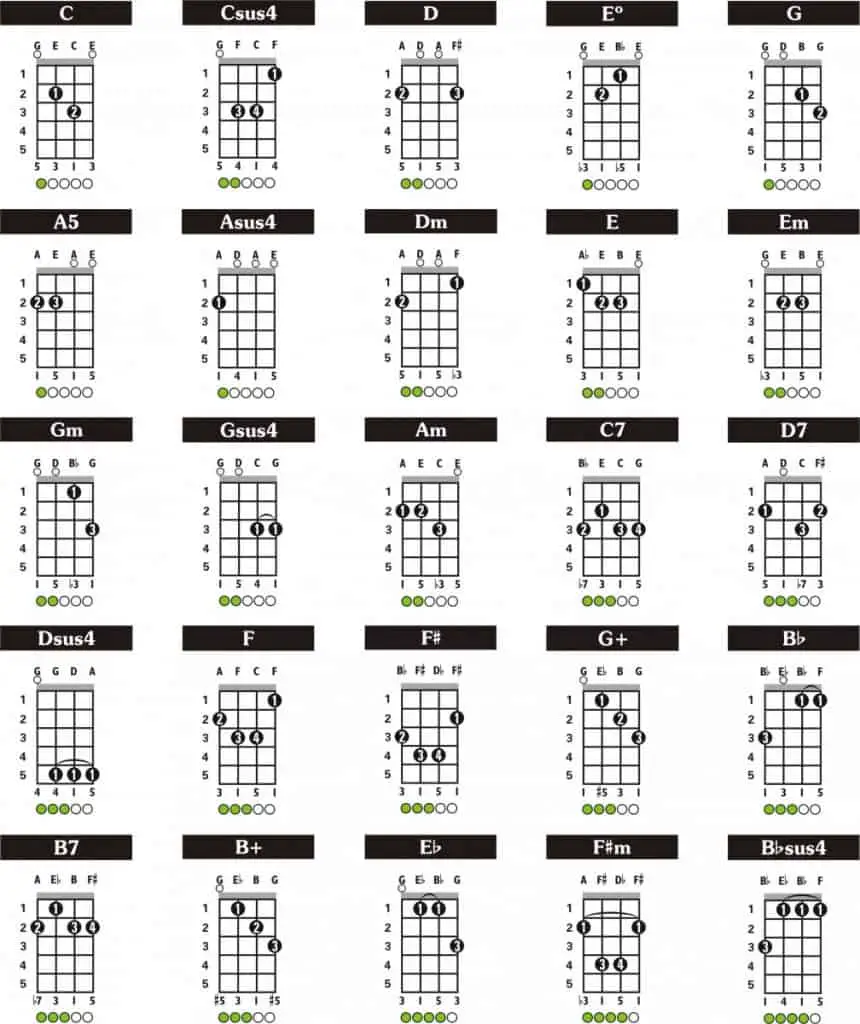Here’s my guide on how to tune a domra, plus some domra chords.
Covered in this Article:
How Do You Tune a Domra?
The tunings here are listed in both of the main scientific pitch designations: The Acoustical Society of America (ASA), first, followed by Helmholtz (after the slash).
See below for the correct tuning positions on a standard 88-note piano keyboard:

On a 61 or 49-note electronic keyboard, middle C is still likely to be in the middle of your instrument.
The equivalent positions can also be seen on standard treble and bass clef staves:

The simplest way to tune your domra is using an electronic chromatic tuner (for example one of the popular Snark models – available on Amazon). This will provide a degree of accuracy, that other methods cannot quite match.
The next best option is to tune the strings to a digital piano or electronic keyboard. This involves using the accuracy of your own hearing to differentiate between sharp, flat and on pitch. You’d be surprised how well the human ear operates in this respect.
Another option is to tune the domra to a guitar, assuming you’re able to get the guitar up to pitch to begin with. In reality, there are many guitar tuning resources available to the musician these days with computer, tablet and phone apps everywhere you turn.
Finally, the most organic method is to tune the domra to itself. You will need to tune the lowest string of your instrument up to pitch (for example the ‘G’ on the 4-string prima domra).
From there you tune each string in succession by fretting at given intervals on the fingerboard (the ‘b’ labelled figures in the diagrams laid out below). Just follow the arrows to obtain the correct fretting positions.
3-String Domra
Piccolo B4/b’ E5/e’’ A5/a’’
Prima E4/a’ A4/a’ D5/d’’
Mezzo-Soprano B3/b E4/e’ A4/a’
Alto E3/e A3/a D4/d’
Tenor B2/B E3/e A3/a
Bass E2/E A2/A D3/d
Contrabass E1/EE A1/AA D2/D
4-String Domra
Piccolo C4/c’ G4/g’ D5/d’’ A5/a’’
Prima G3/g D4/d’ A4/a’ E5/e’’
Alto C3/c G3/g D4/d’ A4/a’
Tenor G2/G D3/d A3/a E4/e’
Bass C2/C G2/G D3/d A3/a
Contrabass E1/EE A1/AA D2/D G2/G
3-String Domra BEA Fingerboard and Tuning
Three members of the domra family share this tuning, albeit over a span of several octaves:
Piccolo, Mezzo-Soprano and Tenor domras. See below:
3-String EAD Fingerboard and Tuning
Four members of the domra family share this tuning, again over the span of several octaves: Prima, Alto, Bass and Contrabass.
4-String CGDA Fingerboard and Tuning
Three members of the 4-string domra family share this tuning: Piccolo, Alto and Bass.
4-String GDAE Fingerboard and Tuning
Two members of the 4-string domra family share this tuning: Prima and Tenor.
4-String EADG Fingerboard and Tuning
Finally, here’s the EADG tuning. Only one member of the 4-string domra family uses this tuning, and that’s the Contrabass.

What Are Some Basic Domra Chords?
I’ve compiled four different sets of chord examples for the three and four-string domra. See below to select the correct one for your particular instrument.
One green dot is an easy chord, and the difficulty goes up to 5 (as illustrated by more green dots).
Piccolo, Mezzo Soprano & Tenor 3-String Domra (B-E-A Tuning)

Prima, Alto & Bass 3-String Domra (E-A-D Tuning)

Piccolo, Alto & Bass 4-String Domra Chords (C-G-D-A Tuning)

Prima & Tenor 4-String Domra (G-D-A-E Tuning)

Pro Tip: If you want a complete Chord Bible for your domra, I’ve written one for the Ukrainian Primo & Alto Tuning for the 4-string. Check it out here.
You can also read my article on what a domra instrument is, and how it sounds – or you can check out the best places to buy a domra, too!










